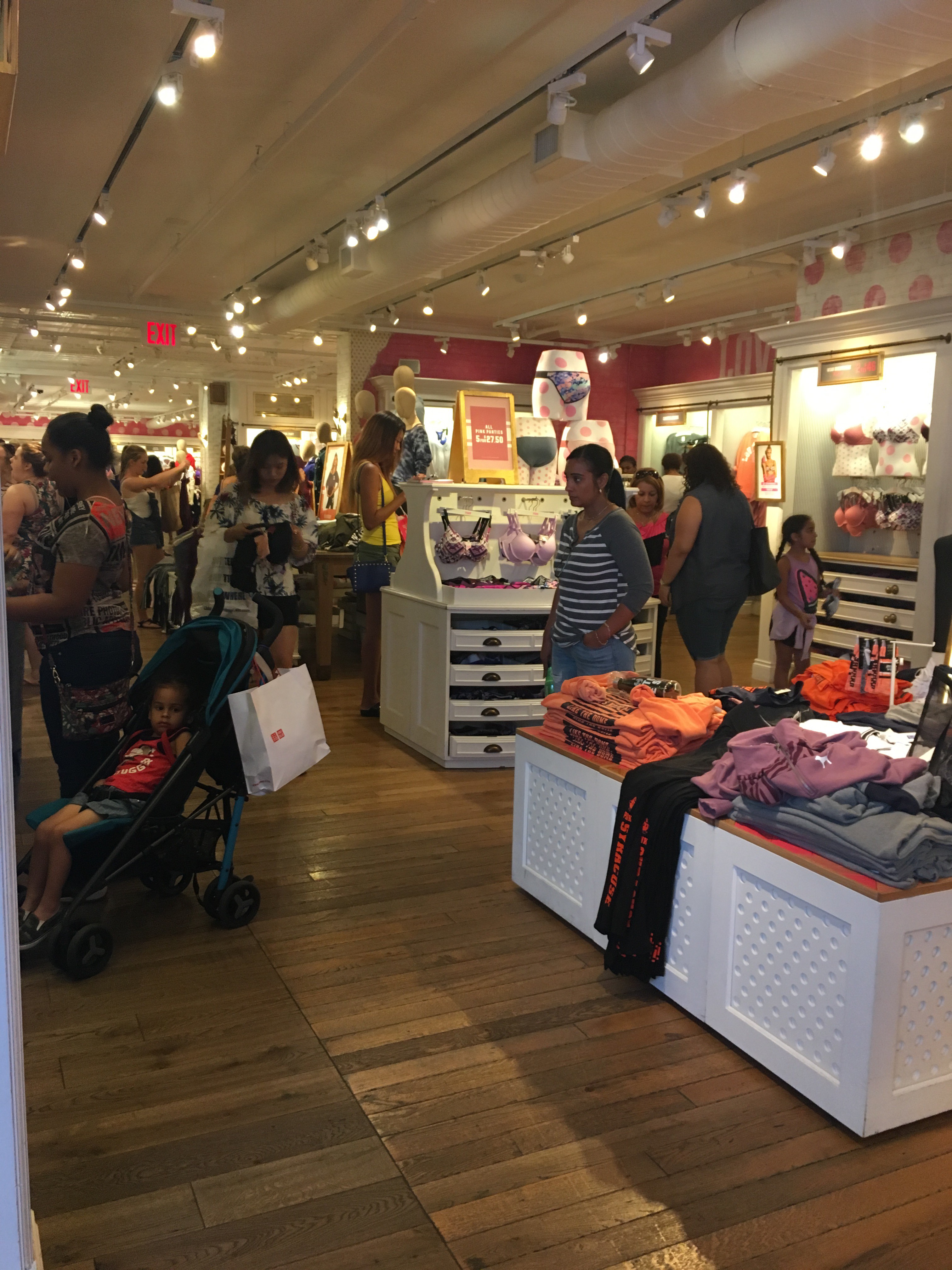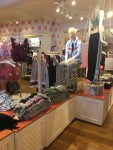
By ADELINE TAO
The online shopping industry has boomed in the recent years due to an increased demand. However, young buyers are skeptical about the subsequent closings of brick-and-mortar stores and decline of malls.

Brick-and-mortar stores are seeing their own demise because of the increasing popularity of online stores. In November 2016, the once-hip store American Apparel announced its second bankruptcy and that it was eventually closing all of its stores across the country.
Katie Ching, a junior at Ramapo college and an avid shopper, said, “I still prefer the old-fashioned way of going to the mall to shop for clothes, mainly because you can see the clothes in person, compared to when you shop online.
“[The clothes] may look nice on how the person is wearing it [online], but when you get it yourself, it may look different from the picture, than what you physically have in your hands,” she added.
Customers lauded American Apparel’s brand for its authentic “American” vibe, with its main selling point being that all of its clothes were made right in the country, not in some random foreign sweatshop. It also catered towards the “hipster” millennials that liked the simple, yet trendy style. Many other stores that catered towards trendy teens that are also shutting down include Aeropostale, Delia’s and Wet Seal.
These stores just cannot compete with the ever-growing online shopping market. In the past few years, online shopping has been steadily increasing its popularity, and thus revenue. According to statista.com, an online statistics portal that provides information about marketing research and business intelligence, the money spent on online shopping is about $2 billion at the moment, which is $1 billion more than it was in 2012. Additionally, the number of online shoppers is about 200 million in total across America.
Millennial Opinion on Online Shopping Sizes
Jerard Guevarra, however, is another junior at Ramapo College who echoes the sentiment Ching, and many other millennials like them, had about the appeal physical stores. As a marketing major who loves to shop, Guevarra sees the advantages of brick-and-mortar stores.
“Yes, online stores are taking away sales from physical stores, but I don’t think that they should be taking away physical stores away 100%, and I don’t think ever are going to. Because, there is still a lot of sales tactics that are in place at the stores, ” Guevarra said.
“When you go into a physical store, first off, you get to try on the item. You get to return items in store, which makes life ten thousand times easier. But, as we’ve seen in marketing, when you touch an item, you’re 10, 20 times more likely to buy the item,” he added.

Another concern regarding online shopping versus shopping at physical stores is sizing. Obviously, customers cannot try on an item online before purchasing. And if the clothes do not fit, there is the extra hassle of having to send the item back to the company.
For Ching, this was a major reason why she still preferred to shop at a mall. “For any online store, you have to know your body measurements and everything, especially since they have different measurements – like how we’re in inches, and [other online stores uses] centimeters,” she said. “And sometimes they may not be accurate. You kind of just have to take the risk and see if it’s worth getting.”
Working at an H&M store at his local mall, Guevarra knows firsthand how the retail business operates. “If it’s something like H&M, since I work there already, I know how everything’s supposed to fit and I know how their clothes look on me. If it’s a company I’ve never seen before, I would like to be able to see them in person rather than take the risk of buying stuff from them,” he said.
He then gestured to the leather jacket he was sporting. “Like this jacket I am wearing, it’s a little bit big. And I got it [online] from some punk company in Philadelphia. I didn’t know what size to get.”
The rising popularity of online stores is undeniable. According to Guevarra, he likes the idea that online stores promotes globalization since more people around the world have access to all different styles of clothing. However, both he and Ching still prefer traditional shopping at malls.
“For shopping websites, they are convenient and sometimes there is free shipping. But there are some places that tell you items are on back-order, and you have to wait a while, sometimes a month,” Ching said. “Sometimes, it’s just not worth it.”
I found the statistics and links given throughout the article very helpful, and it made me realize some people viewed online shopping which is normally help in high regard in a negative light. It was also very interesting hearing that online sales doubled in the last five years, and I’d like to hear more about WHY this has happened, and what sectors of online shopping have grown the most.
A good article that shares the opinions of millennials who don’t prefer online shopping. The statistics regarding the amount of money spent in online shopping and the amount of online shoppers in America were good, informative statistics regarding online shopping.
Something that may be worth looking into is comparing certain companies online sales vs their in-store sales.